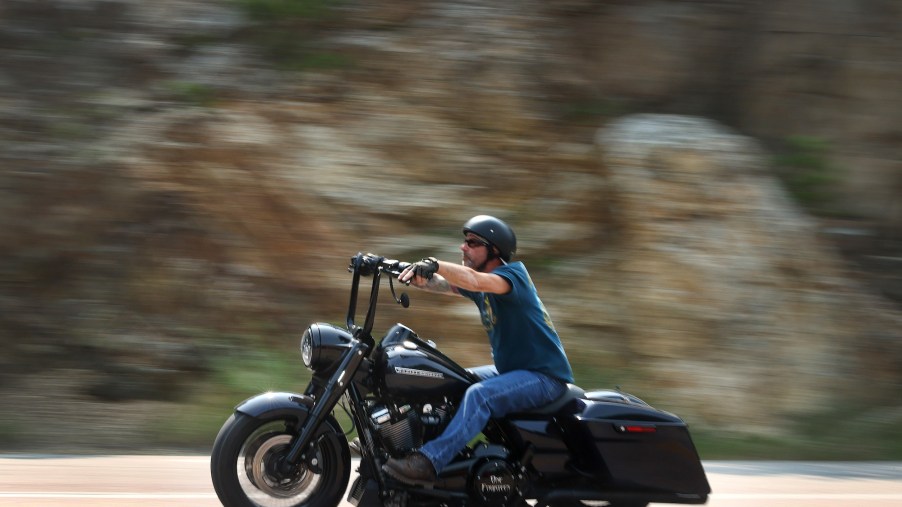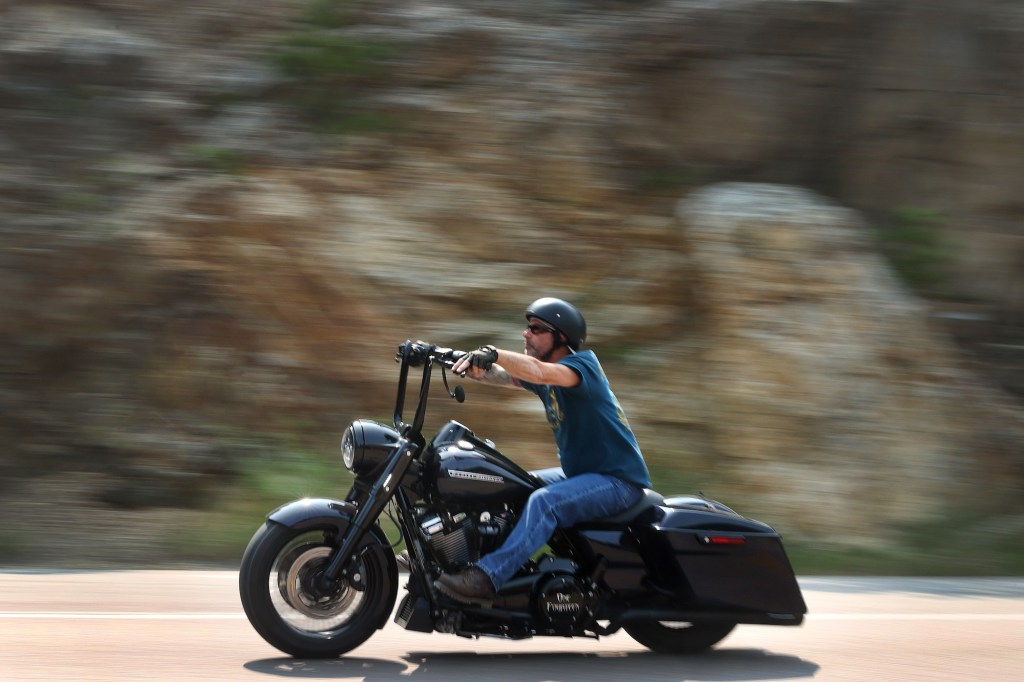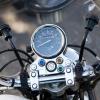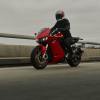
Motorcycle Equipment Rules You Should Never Break if You Want to Avoid a Ticket
Riding a motorcycle is fun, exhilarating, and even relaxing. Before heading out for a ride, it’s important to follow safety protocol and ensure your motorcycle equipment doesn’t violate laws or state requirements. If it is, you could end up with a potentially unsafe setup on your motorcycle, resulting in costly tickets. Follow these if you want to avoid a traffic stop.
Motorcycle safety rules you should never break

Helmets are a top safety item when going out for a ride on a motorcycle. According to the National Highway Traffic Safety Administration, the number of motorcyclists wearing helmets decreased from 79.7% in 2019 to 65% percent in 2020. Of the riders who wore helmets in states that require them, about 10% were not compliant with Department of Transportation state requirements.
Because helmets have been shown to save lives, it’s important to not only wear a helmet when riding on a motorcycle but also be sure the helmet is DOT-compliant. The NTSA defines DOT-compliant motorcycle helmets as those that are at least one inch thick, cover the person’s ears, and have strong, secure chin straps.
If you’re new to motorcycle riding, take time to familiarize yourself with riding and the feel of your bike beforehand. It’s best to ride and practice in a secluded area or empty parking lot, much the same way many people practice when learning to drive a car.
Before your ride, check your motorcycle to make sure it’s in good working order and the tires are filled to the recommended pressure. When you’re on the road, always use turn signals to indicate where you’re heading, and follow posted speed limits. Don’t drive distracted either, AAA reminds. Always be aware of your surroundings when operating a motorcycle.
Interesting motorcycle equipment rules in these U.S. states
Some motorcycle equipment laws and restrictions are interesting. For example, in Alabama, no person shall operate a motorcycle with handlebars more than 15 inches above the seat, the Alabama Motorcycle Operator Manual states.
And the West Virginia Legislature says that every motorcycle driver and passenger must wear shatter-resistant safety eyeglasses, goggles, or a face shield.
In terms of headlights, there are restrictions on what color they can be, too. Autoblog reports that lights marketed as blue or super-blue are, in fact, very bright white that appears blue. The only legal headlight color in any state is white, so these are acceptable.
When it comes to transporting goods, the Massachusetts Legislature states that no animal can be transported in the cargo area of any motor vehicle, including motorcycles. In other words, you can’t have an animal inside a motorcycle storage box in that state.
Essential motorcycle gear to keep you safe
You always want to follow state laws about operating motorcycles and be safe and smart with your safety gear choices. Whether a state has a rule that requires motorcyclists to wear helmets, they are the most important items you can wear while riding.
Besides helmets, safety glasses and face shields protect eyes from road debris. Gloves also provide protection for hands in case of an accident. But ensure they’re durable and tight-fitting so that they don’t interfere with operating the motorcycle.
Other clothing items are also important. Boots aren’t just to make a fashion statement. Stiff boots that go above the ankle protect against some lower-leg fractures. Jackets also protect elbows, arms, and backs. They come in a range of materials and with protective padding.
Finally, you can take additional safety precautions by wearing motorcycle airbag garments such as vests and jackets.


